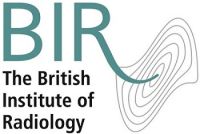Risks associated with ionising radiation exposure are greater in children due to their longer life span and greater radiosensitivity. The good news is that according to researchers the risk can be significantly reduced with just a little bit of education. The finding is from a new study, “Point-of-care estimated radiation exposure and imaging guidelines can reduce pediatric radiation burden,” published in the Journal of the American Board of Family Medicine.
The researchers conducted a study of 115 physicians from 17 military family medicine training programmes to determine whether the clinical decision support system — which encompasses a variety of tools to enhance decision-making in the clinical workflow — and the order in which decision-support information is presented would impact physician imaging choices.
Imaging guidelines and clinical decision support systems have been developed to help physicians better understand doses of radiation associated with common imaging modalities. However, these initiatives have been inconsistently adopted and are largely unavailable for children.
Researchers used an American College of Radiology (ACR) Appropriateness Criteria paediatric clinical scenario as material for the study. They examined how decision support (ie, estimated radiation exposure coupled with imaging guidelines) provided in the electronic medical record influenced family physician selection of paediatric imaging modalities. Participants were divided into two groups: those who reviewed the ACR Criteria and then radiation exposure information and those who received radiation exposure information and then the ACR criteria.
Prior to the study, the researchers note, ultrasound was the initial imaging modality of choice — between ultrasound, computed tomography (CT), magnetic resonance imaging (MRI) and multiple types of x-rays — for more than 70 percent of the participants. Results showed that in the group that viewed the ACR criteria prior to radiation exposure information, there was a significant change to their imaging choices, with ultrasound use increasing. In the second group, who reviewed radiation exposure initially, the effect was not noted.
“Busy clinicians in the civilian sector or in the military welcome information that helps them make a quick, safe and evidence-based decision. This study provides them with evidence that the information helps save kids from unnecessary radiation exposure,” says Air Force Major (Dr.) Christopher W. Bunt, assistant professor, Department of Family Medicine, F. Edward Hébert School of Medicine at Uniformed Services University of the Health Sciences (USU).
“As a parent, I want my kids to receive the imaging studies that they need to diagnose and treat illness or injury. Making sure that these decisions are supported by evidence and are safe for my children is extremely important. Our study helps parents feel comfortable about their clinician's decisions,” adds Dr. Bunt who led the research team composed of members from USU, National Library of Medicine, Cincinnati Children’s Hospital Medical Center, and Clemson University.
Source: Uniformed Services University of the Health Sciences (USU)
Image Credit: Slideshare.net
The researchers conducted a study of 115 physicians from 17 military family medicine training programmes to determine whether the clinical decision support system — which encompasses a variety of tools to enhance decision-making in the clinical workflow — and the order in which decision-support information is presented would impact physician imaging choices.
Imaging guidelines and clinical decision support systems have been developed to help physicians better understand doses of radiation associated with common imaging modalities. However, these initiatives have been inconsistently adopted and are largely unavailable for children.
Researchers used an American College of Radiology (ACR) Appropriateness Criteria paediatric clinical scenario as material for the study. They examined how decision support (ie, estimated radiation exposure coupled with imaging guidelines) provided in the electronic medical record influenced family physician selection of paediatric imaging modalities. Participants were divided into two groups: those who reviewed the ACR Criteria and then radiation exposure information and those who received radiation exposure information and then the ACR criteria.
Prior to the study, the researchers note, ultrasound was the initial imaging modality of choice — between ultrasound, computed tomography (CT), magnetic resonance imaging (MRI) and multiple types of x-rays — for more than 70 percent of the participants. Results showed that in the group that viewed the ACR criteria prior to radiation exposure information, there was a significant change to their imaging choices, with ultrasound use increasing. In the second group, who reviewed radiation exposure initially, the effect was not noted.
“Busy clinicians in the civilian sector or in the military welcome information that helps them make a quick, safe and evidence-based decision. This study provides them with evidence that the information helps save kids from unnecessary radiation exposure,” says Air Force Major (Dr.) Christopher W. Bunt, assistant professor, Department of Family Medicine, F. Edward Hébert School of Medicine at Uniformed Services University of the Health Sciences (USU).
“As a parent, I want my kids to receive the imaging studies that they need to diagnose and treat illness or injury. Making sure that these decisions are supported by evidence and are safe for my children is extremely important. Our study helps parents feel comfortable about their clinician's decisions,” adds Dr. Bunt who led the research team composed of members from USU, National Library of Medicine, Cincinnati Children’s Hospital Medical Center, and Clemson University.
Source: Uniformed Services University of the Health Sciences (USU)
Image Credit: Slideshare.net
Latest Articles
healthmanagement, EHR, EMR, electronic health record, decision support, radiation, medical imaging
Radiation exposure information and imaging guidelines can reduce paediatric radiation burden.



























